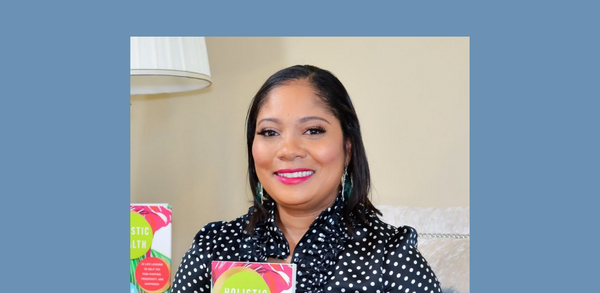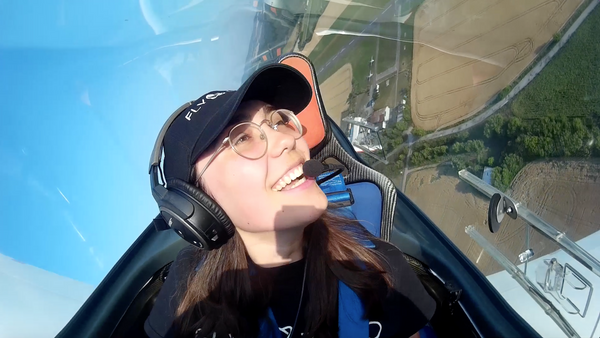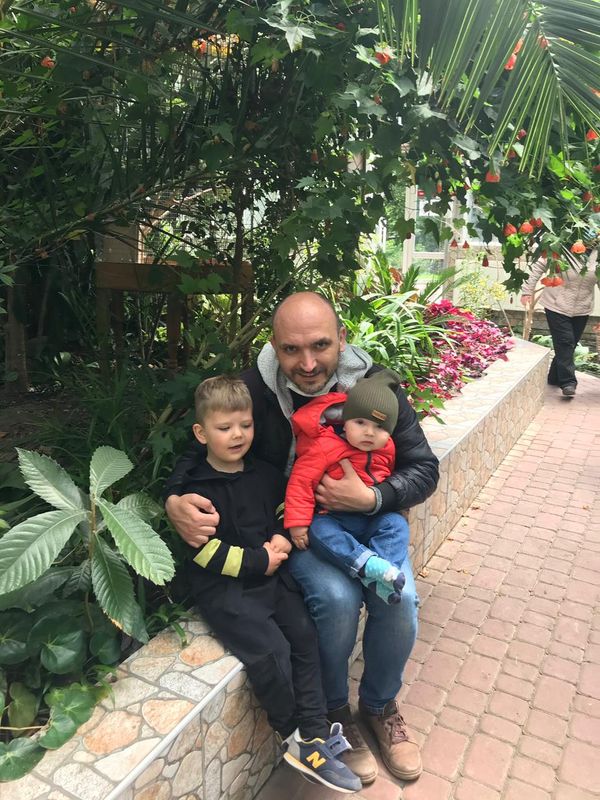Interview with Author and Illustrator, Emma Yarlett
Writing a children's book is on the bucket list for many of us -- if you're one who dreams of bringing your idea into fruition, Emma Yarlett shows us the way.
By Victoria Oldridge
Emma Yarlett, based in Falmouth, England, is an internationally published children's Illustrator and author. Emma's first work, Sidney, Stella and the Moon, preceded future, notable works – the Nibbles series, Santa Post, Dragon Post, Beast Feast, Orion and the Dark, and others.
Truffld: You’ve said that you’ve been drawing ever since you were able to pick-up a crayon. How did you know that being an illustrator would be in your future?
EY: I’ve loved drawing and crafting since kindergarten and one of my drawings at that time was a mermaid. My mom taught at the school where I was, and the teachers apparently told her that my mermaid was so good that they kept it at the school twenty years later. Maybe people thought I was good back then, but didn’t tell me (laughing). A career path as an illustrator isn’t something that’s really pushed in the UK, so I didn’t even realize that this was achievable for me until about age fourteen or fifteen.

Truffld: Many children’s book authors and illustrators say that writing a book for children is harder than one for adults, which I think is counterintuitive to most people.
EY: When you’re trying to put a message across to a child who perhaps can’t read yet and is still learning visual cues and languages, it has to be really simple and approachable so that a child can understand it straight away. Conceiving an idea that a child will find interesting, conveying the message in a child-friendly way, and using minimal words to describe something alongside also doing the illustrations, means that there are a lot of variables to weigh together to create a simple, clear story. Oftentimes, the simplest ideas take the most amount of work and stand the test of time, and those are the stories that we’re still reading now twenty years later.
Truffld: What galvanized your first project, Sidney, Stella and the Moon?
EY: I wrote that book while I was still in university. A lot of my classmates were going into advertising, packaging, and all of that sort of thing, because we were encouraged to study all aspects of illustration. But I knew going into university that I wanted to do children’s books and so I had a try at a book in my first year and it was terrible. It looked so bad, and I sort of forget that that’s what I wanted to do for a little bit because I was put off. A few months later I tried again and toward the end of my three years there, I wrote a book called Cecile and His Shadow about a man who wanted to find various ways to get rid of his shadow. But I quickly received feedback that you don’t write a children’s book where the main character is a grown man, and then the name, Cecile, wasn’t easy for kids to read, so Cecile became Sidney and Sidney became a child.
I entered that story into the Macmillan competition and was highly commended for it which made me realize, huh, there’s something in this book, but it still didn’t hit all of the markers for me of a book that I thought children would be interested in. I was offered a book deal after the competition but I decided to throw it in the can and improve it by adding a female character -- which I really felt it needed -- and expanding on the original elements of the story that I liked. Sidney Stella and the Moon was borne of that original book.
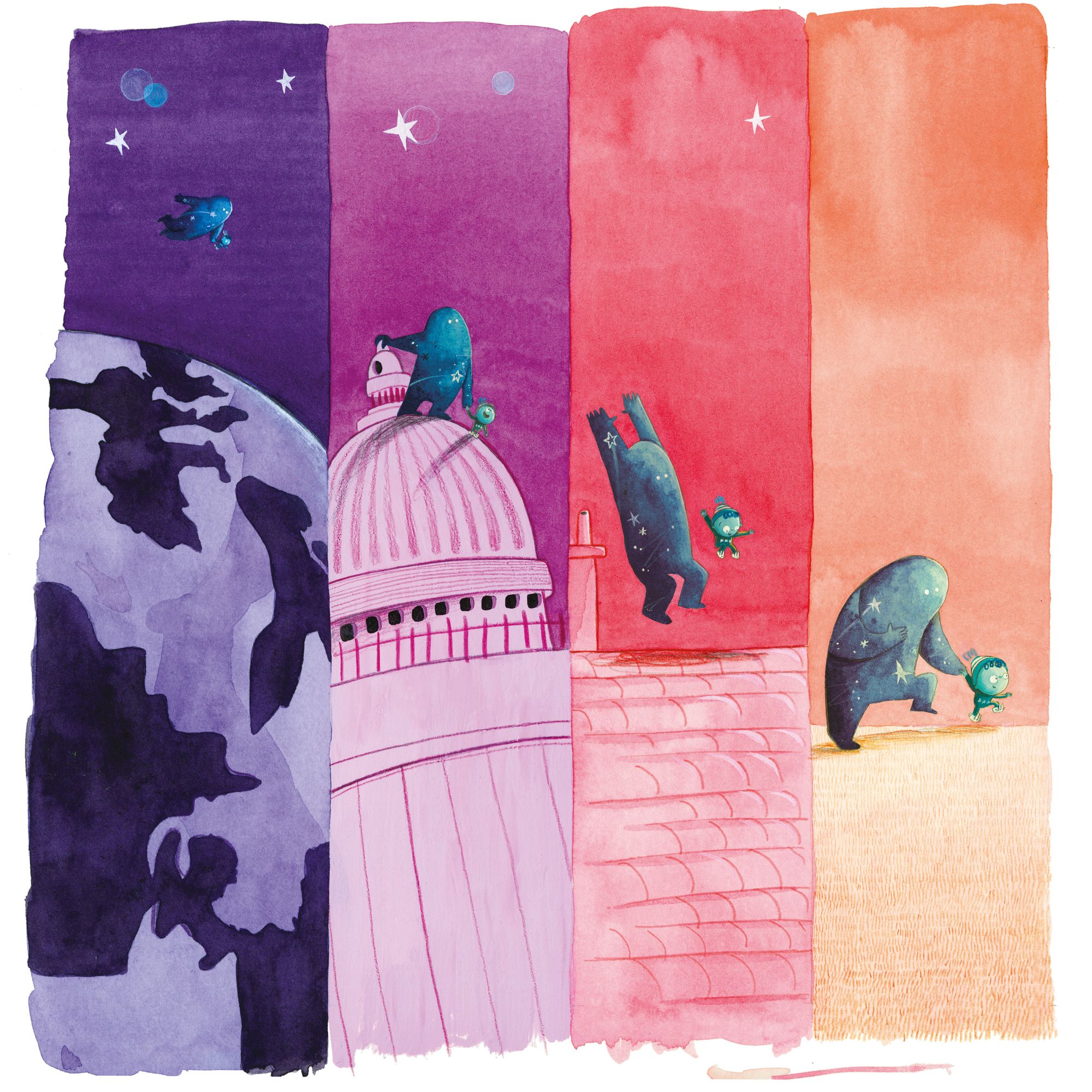
Truffld: You’ve mentioned that some of your ideas percolate over months or years. How do your stories eventually spark into fruition?
EY: I do have a childish sense of fun and humor in some ways and I enjoy hanging out with kids and my daughter and finding the things that she finds interesting, actually interesting myself, but a lot of my ideas spark from conversations with friends. Nibbles in particular, I remember saying to someone, 'Wouldn’t it be nice if a pet lived in a book? Or a pet monster? And what if it actually ate books?'
I have to talk the ideas through, thrash them out a bit, and then just leave them at the back of my head; maybe write a scrap of a note somewhere and then merge it later with another scrap of idea -- sort of a paper engineering where they cross-contaminate, and then I think, ‘there’s the idea!’ It’s a weird process.
Truffld: Are you still going back to basics and drawing free-hand, or leveraging all of the digital graphic design tools out there to implement and augment a lot of your ideas?
Emma: I graduated nearly ten years ago and during my time in school there was a lot of push toward digital, which a lot of my peers were doing. It was the new, exciting way to work because it meant that you could achieve so much more in a short amount of time. My earlier books were more digital but I moved away from it. It’s quite rare nowadays to do things hand-rendered but I don’t find joy in doing things digitally even though people do make some really beautiful digital work. For me it’s all about the process of getting my hands dirty and in paint, and finding my fingerprints, literally, in my artwork. The mess you make can also make a piece of art more interesting because you can see the creation of it more. If it’s too slick it loses its beauty of being tangible, fluid, and handmade.
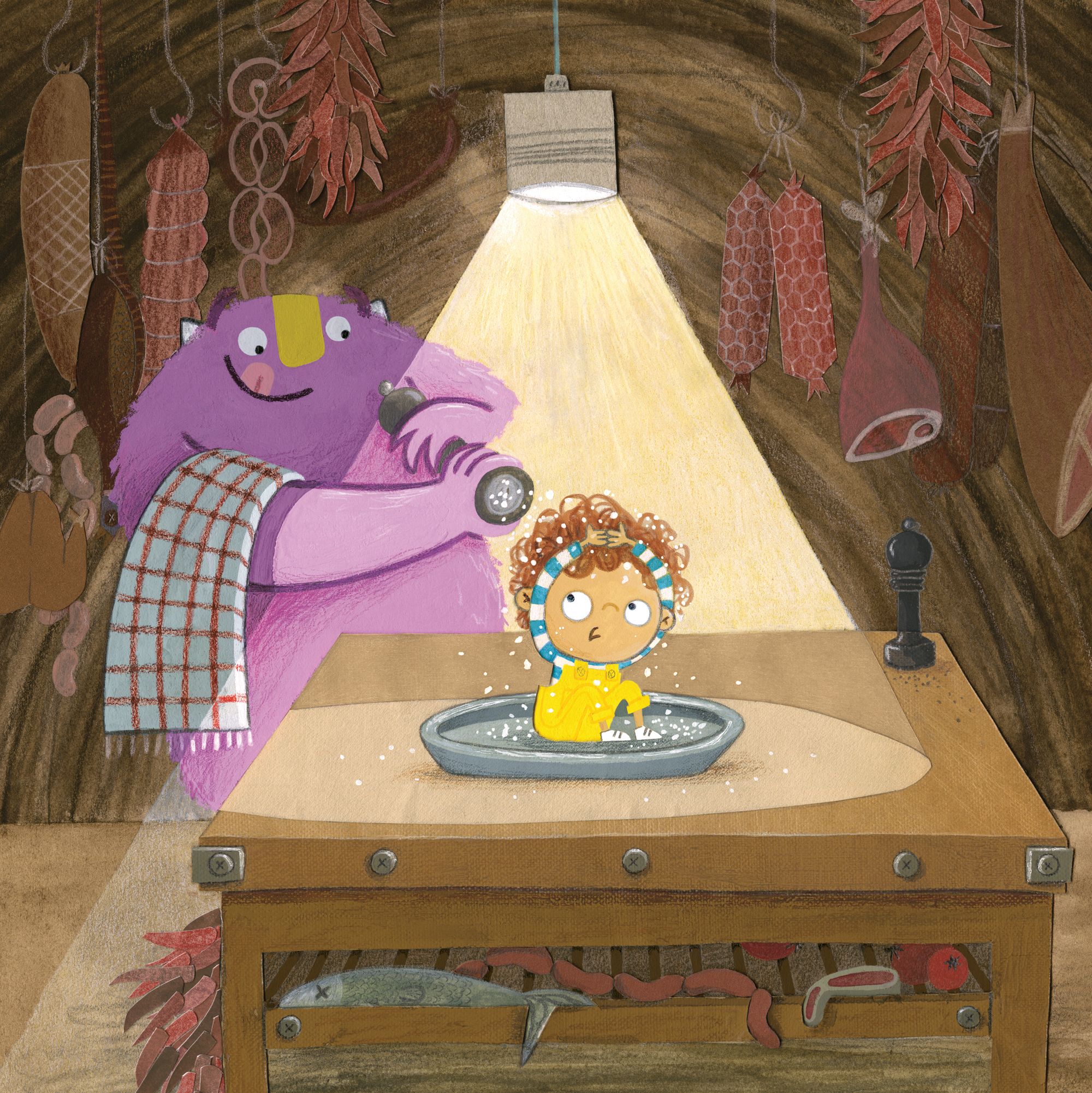
Truffld: For people looking to break into the children’s book arena, how can authors match with an illustrator, and vice versa?
EY: An illustrator will have an agent or an author will have a literary agent and the writer’s agent will work with the writer to create some story ideas with which they can then approach the publisher. The publisher will then marry a writer with an illustrator that could have a similar style and would work well together pictorially even more than relationally. In my experience, the illustrator and author are rarely in touch with one another; it’s the publisher we connect with.
When I started out I did things a bit differently by going direct to publishers at a fair in Italy and didn't have an agent at that point. I think it’s important to do things that make you stand out. But the route I took is an unusual one, and having an agent gives you a head start.
Truffld: Are publishers seeking certain trend topics right now, or are they open to an array of story types?
EY: Here in the UK right now, things are becoming more progressive with respect to inclusion, equality, and even ecologically with climate change, and publishers are going in on them -- that’s the trend right now. There’s also something about the classic, timeliness storylines that speak to humanity in a simple way, so I don’t know that I would necessarily try to write within a trend; I think writing from your heart, a pure message that you want to tell children is the way to go rather than tapping into trends.
Truffld: What do you see next for yourself?
EY: It’s funny, the Nibbles series has actually become my bestseller and it interestingly started as a side project, so hopefully there’s some more thought bank ideas to continue with those. I just finished and published Santa Post which is the third of a trilogy and now I’m working on another book that will be published next year, and this one was inspired by my daughter. I have a few other book ideas that are marinating in the background. I’ve become slightly well known for the more intricate detailing of things, so now that’s kind of what publishers want, whereas I’m trying to steer back to a simpler look and story. We’ll see if I get my way or not [laughs].
Truffld: Thank you. I think your feedback is really helpful and will inspire people who have had a children’s book on their bucket list, to take the first step.
EY: I think so many people don’t actually follow their dream of what they want to do. Particularly in the creative industries it is very competitive but you can make yourself stand out. Look at other people’s work to see what they’re doing, but don’t look at it too much -- find inspiration in other things like music, art, interior design, and be yourself and be different, then there will be a lot more interesting books out there.

